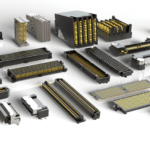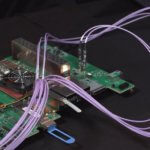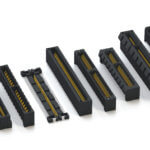Samtec has released the industry’s first 0.50 mm pitch edge card socket with justification beam. This design allows high-speed signals to pass through an incredibly dense connector while keeping the mating PCB at a reasonable cost.
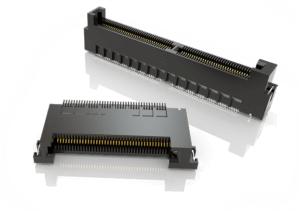
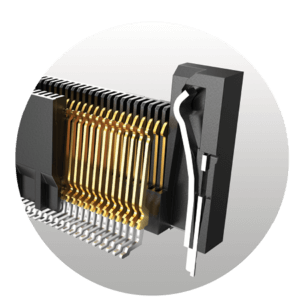
The socket’s justification beam is designed to shift the card into proper alignment with the contacts. This allows for standard board tolerance on cards that typically would not work with ultra-fine pitch connectors. Manufacturing costs are then optimized creating a 30-50% PCB cost savings and a high yield for standard cards.
Space Savings
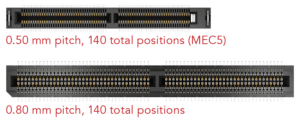
The extreme density of this ultra-fine 0.50 mm pitch edge card socket provides incredible space savings compared to more common 0.80 mm pitch solutions.
Available in both vertical (MEC5-DV) and right-angle (MEC5-RA), this socket features up to 300 total I/Os for high-density applications.
High Speeds
In order to meet the industry’s demands for speed, the vertical socket is designed for 28 Gbps NRZ/56 Gbps PAM4 performance. Both orientations are designed to handle PCIe® Gen 4 signaling.
Rated to 1.5 A per contact, this system accepts .062” (1.60 mm) thick cards and features standard alignment pins and card polarization. Choice of through-hole or surface mount rugged weld tabs are available for a secure connection to the board.
For more information about MEC5, check out this video.
Samtec’s Edge Card Family
Samtec is excited to add MEC5 to an already broad line of edge cards available in a variety of pitches and orientations.
The popular 0.80 mm pitch Edge Rate® sockets (HSEC8) are available in vertical, pass-through, right-angle or edge mount orientations, and elevated stack heights to 30 mm.
Standard high-speed edge card sockets include: 0.635 mm (MEC6), 0.80 mm (MEC8), 1.00 mm (MEC1), 1.27 mm (MECF) and 2.00 mm (MEC2). The 1.00 mm pitch PCI Express® socket (PCIE) supports one, four, eight and sixteen links; a low-profile version (PCIE-LP) is compatible to Gen 4 speeds.
The 1.00 mm pitch micro plane socket (SAL1) is SATALink™ compatible and mounts in pairs to simplify signal routing.
